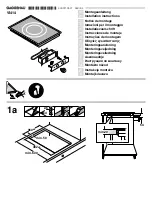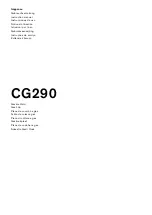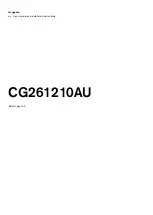
18
Uses, Tables and Tips
Pans
The better the pan, the better the results.
•
You can recognise good pans by their bases. The
base should be as thick and flat as possible.
•
Pay particular attention when buying new pans to
the diameter of the base. Manufacturers often give
only the diameter of the upper rim.
•
Pots with aluminium or copper bases can cause
metallic discolouring on the glass ceramic surface,
which is very difficult or impossible to remove.
•
Do not use cast iron pans or pans with a rough,
burred or damaged base. This can produce perma-
nent scratching if the pan is slid across the sur-
face.
•
When cold, pan bases are normally bowed slightly
inwards (concave). They should never be bowed
outwards (convex).
•
If you wish to use special types of pan (e.g. a pres-
sure cooker, simmering pan, wok, etc.), please ob-
serve the manufacturer's instructions.
2
Energy saving tips
You can save valuable energy by observing the fol-
lowing points:
•
Always position pots and pans before switching on
the cooking zone.
•
Dirty cooking zones and pan bases increase power
consumption.
•
Whenever possible always position the lids firmly
on pots and pans to cover completely.
•
Switch off the cooking zones before the end of the
cooking time to use the residual heat such as to
keep foods warm or for melting.
•
The base of the pan should be the same size as
the cooking zone.
•
Using a pressure cooker reduces cooking times by
up to 50%.
Содержание EHS 8670 P
Страница 28: ...106 Assembly Montagem Montering ...
Страница 29: ...107 ...
Страница 30: ...108 ...
Страница 31: ...109 ...
Страница 32: ...110 ...
Страница 33: ...111 ...
















































